Google has said links are less important than they used to be, and most SEOs have come to accept that as true. Our findings indicate that this is true overall, but for certain types of queries, links matter more.
I still believe that links should be a part of your SEO strategy, but they shouldn’t be your whole strategy. A while back, I answered the question, “Do links still matter for rankings?” by disavowing all links to a few blogs. Traffic and rankings fell, so yes, links still matter.
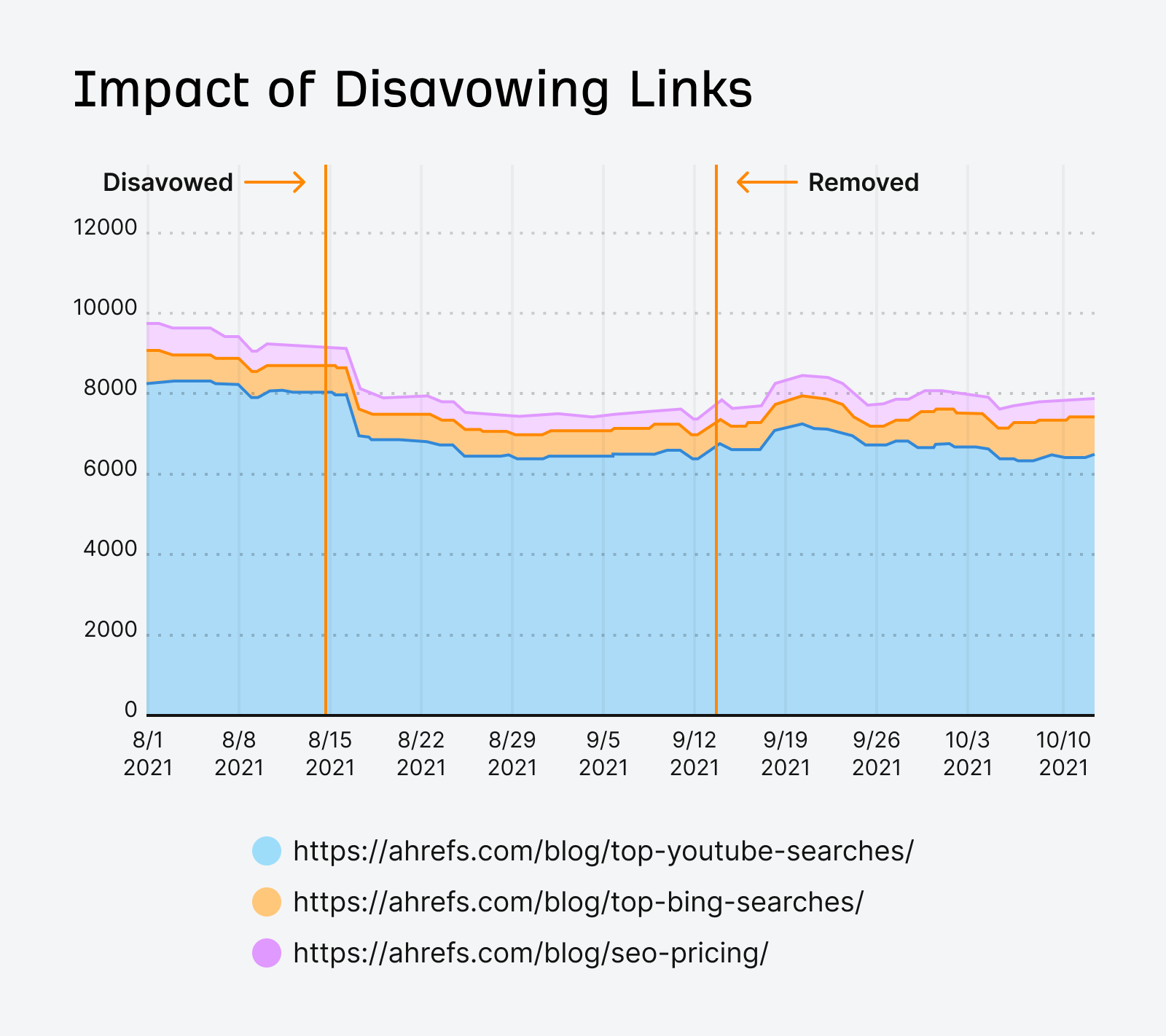
This time, I was curious if the importance of links had changed over time. I also was curious if we could segment the data to see when links matter more, and when they matter less.
Let’s dig in (after a huge thanks to our data scientist Xibeijia Guan for doing all the hard data parts of this study, and to our CMO Tim Soulo for his input).
- Domain rating: 0.131
- Number of backlinks: 0.248
- Number of followed backlinks: 0.242
- Number of refdomains: 0.255
- Number of followed refdomains: 0.250
- Number of internal inlinks: 0.117
- Number of internal outlinks: 0.093
- Number of external outlinks: 0.083
- If keywords present in URL: 0.034
- Length of URL: -0.107
I want to give all the normal warnings like Correlation ≠ Causation. These are generally considered weak correlations or even very weak correlations on the Spearman scale, but that doesn’t mean that these things aren’t important. There are a lot of ranking factors and links do play a role in your rankings.
Here are a few box plots to show the data visually for important metrics. In case you’re seeing box plots for the first time, here’s how you should read them:
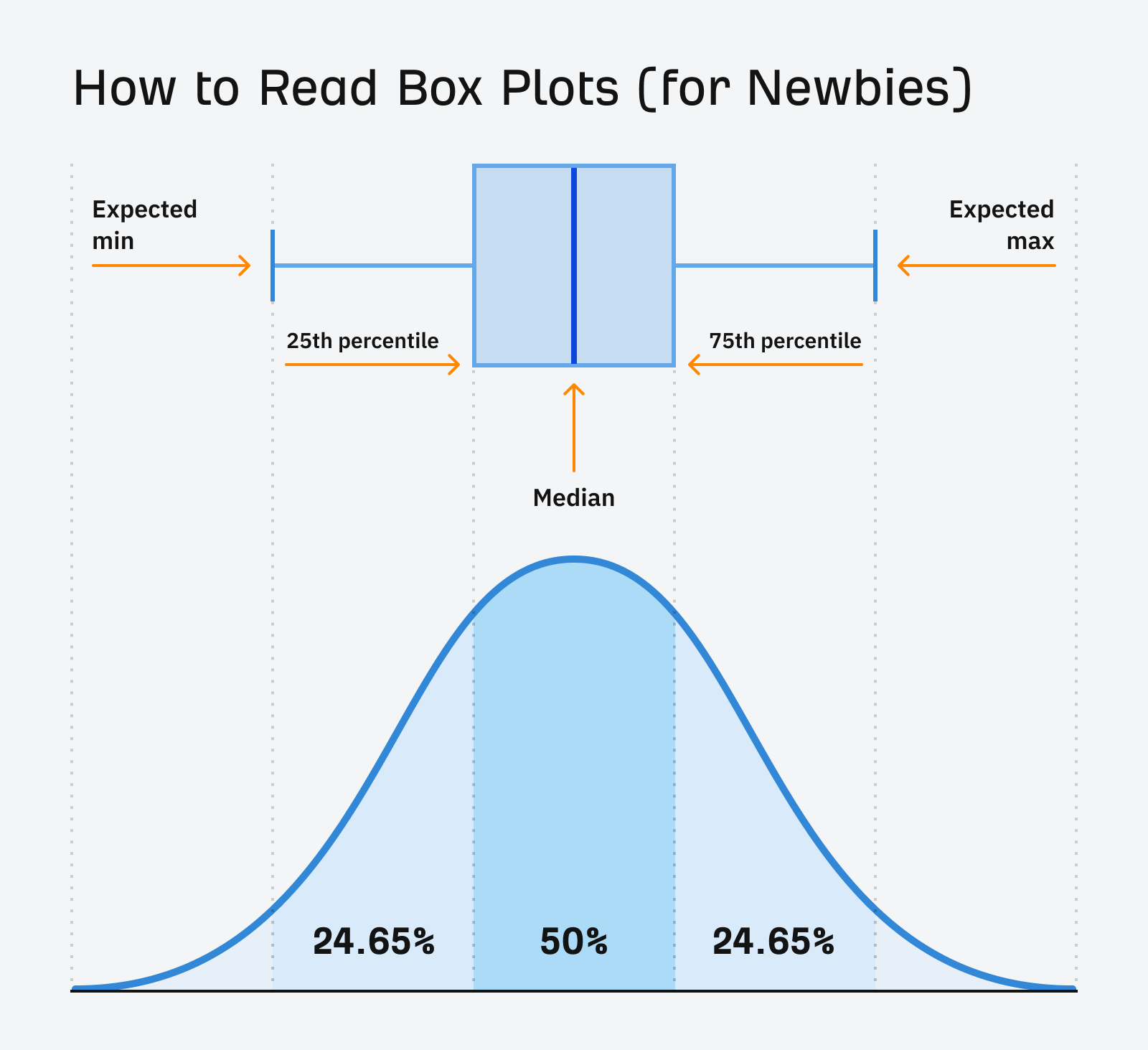
The small lines on the edges represent the minimum and maximum values. And 50% of all values fall in the highlighted areas. The line in that area is the median value.
Generally, better link metrics = higher rankings.
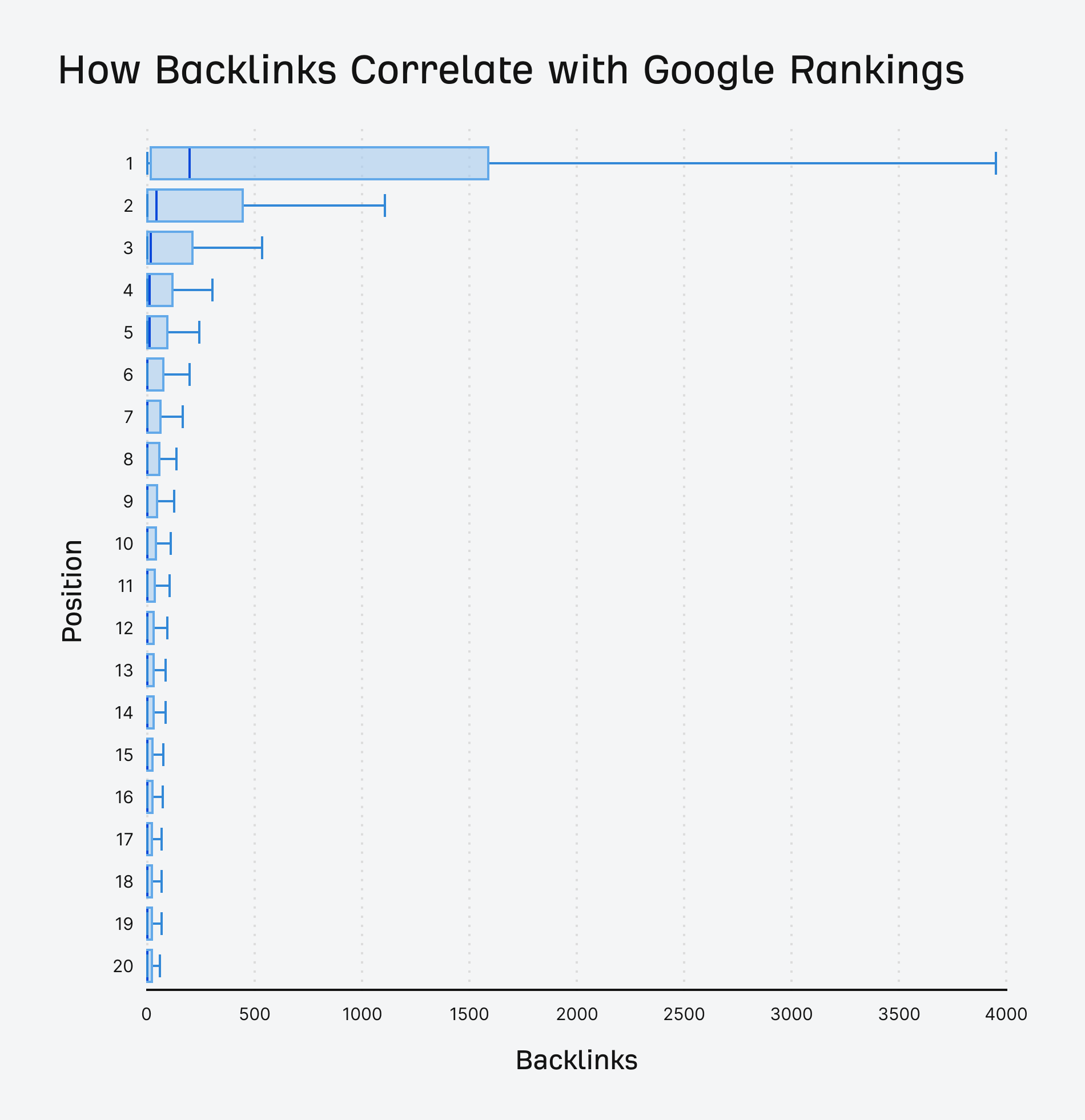
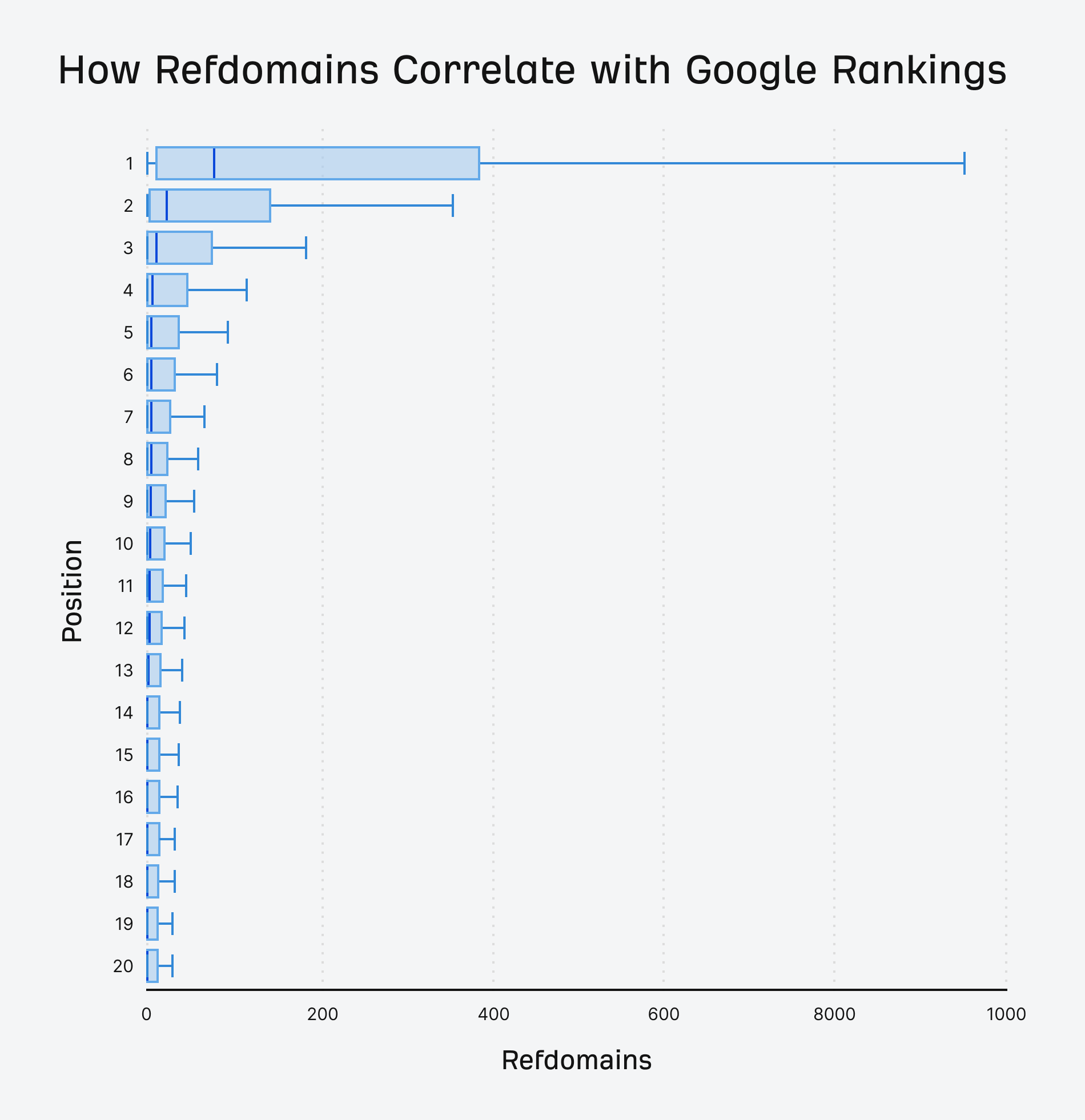
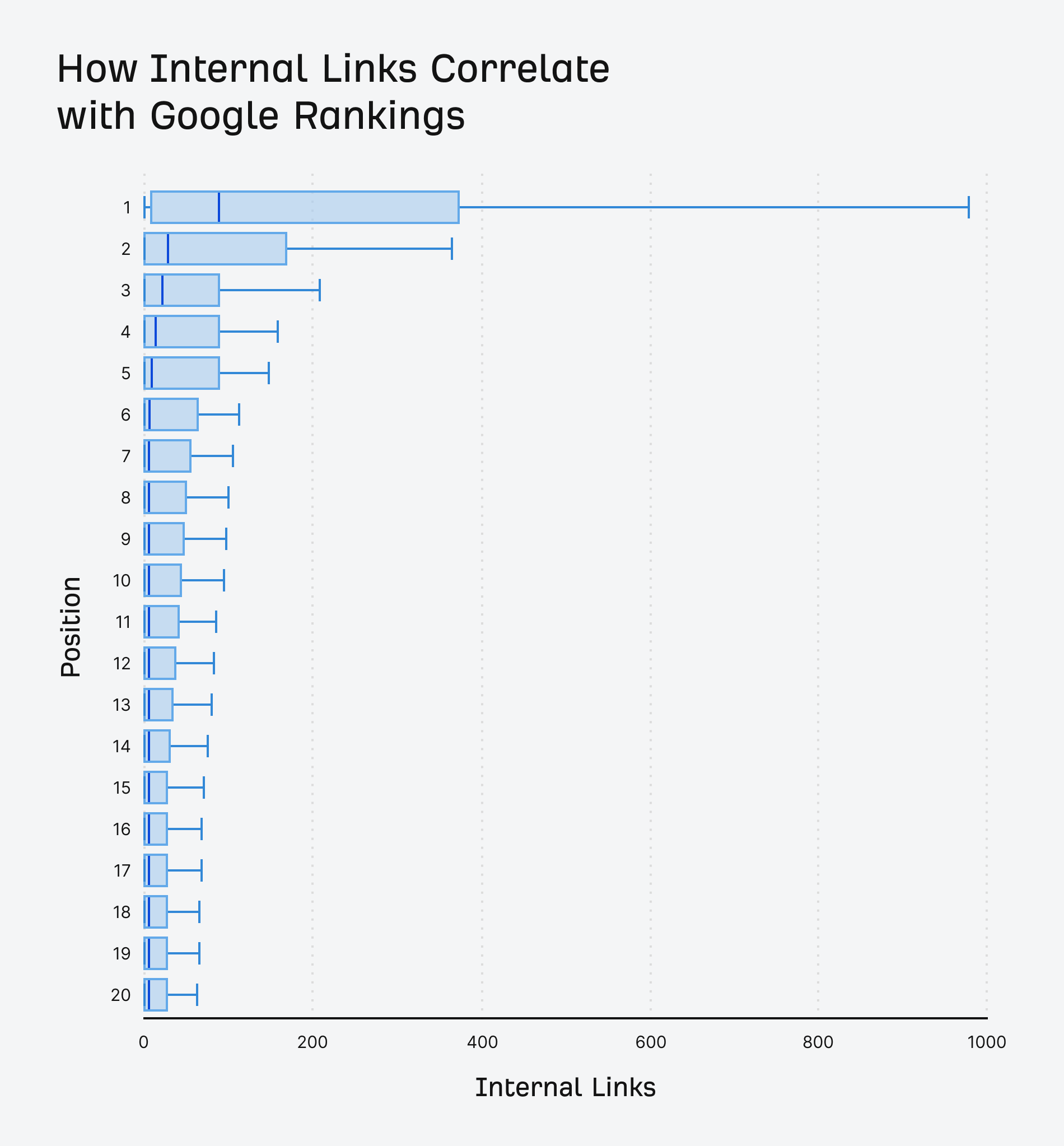
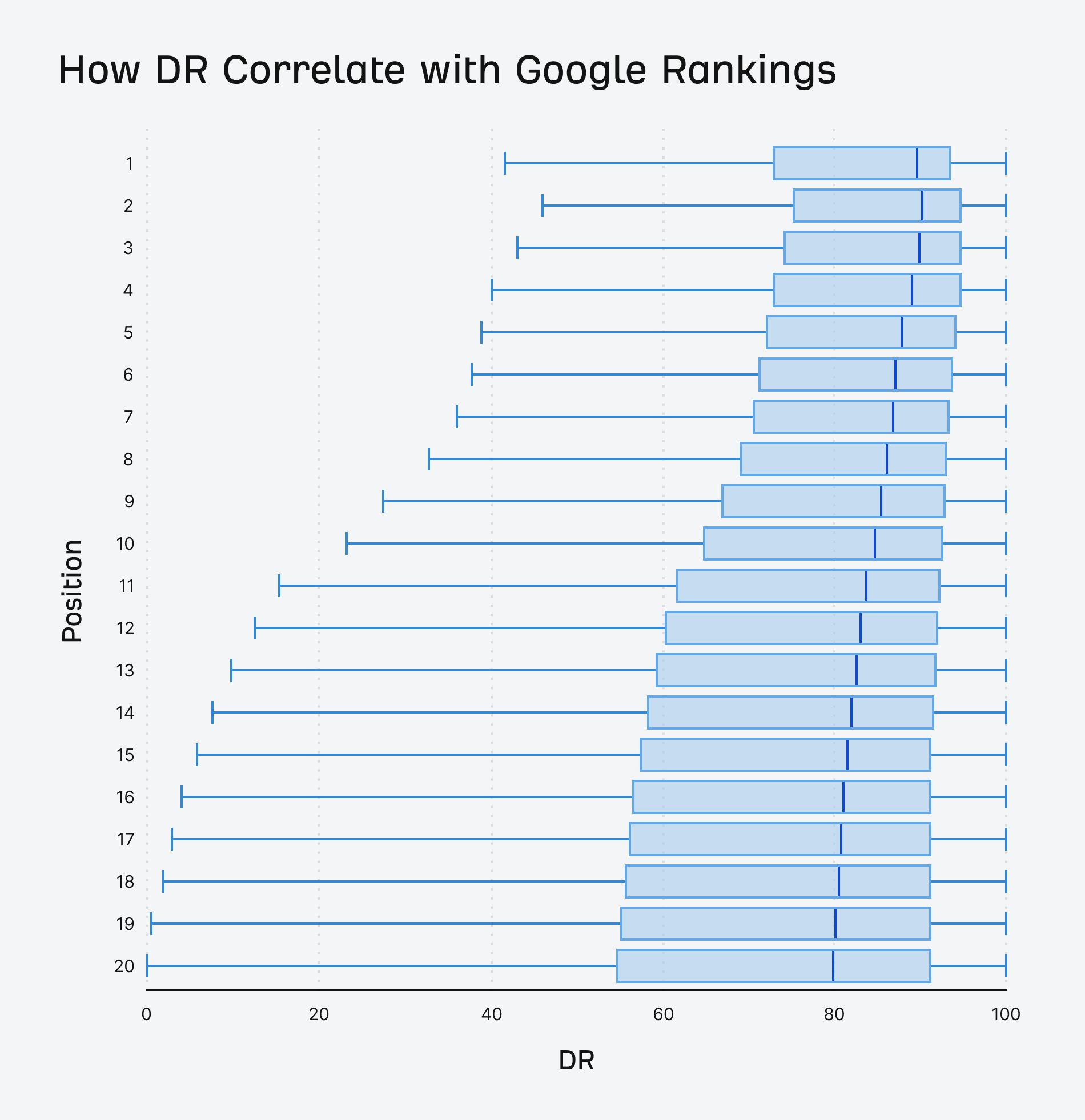
The methodology was a bit different. It was low volume (2,000–5,000), non-branded queries. I can’t do an exact comparison, but the correlations were higher at the time:
- Links: 0.27
- Followed links: 0.25
- Referring domains: 0.29
- Followed Referring Domains: 0.26
The current correlations for these metrics and similar queries are 0.22–0.24, and may be slightly lower than that for non-branded terms as I mentioned before.
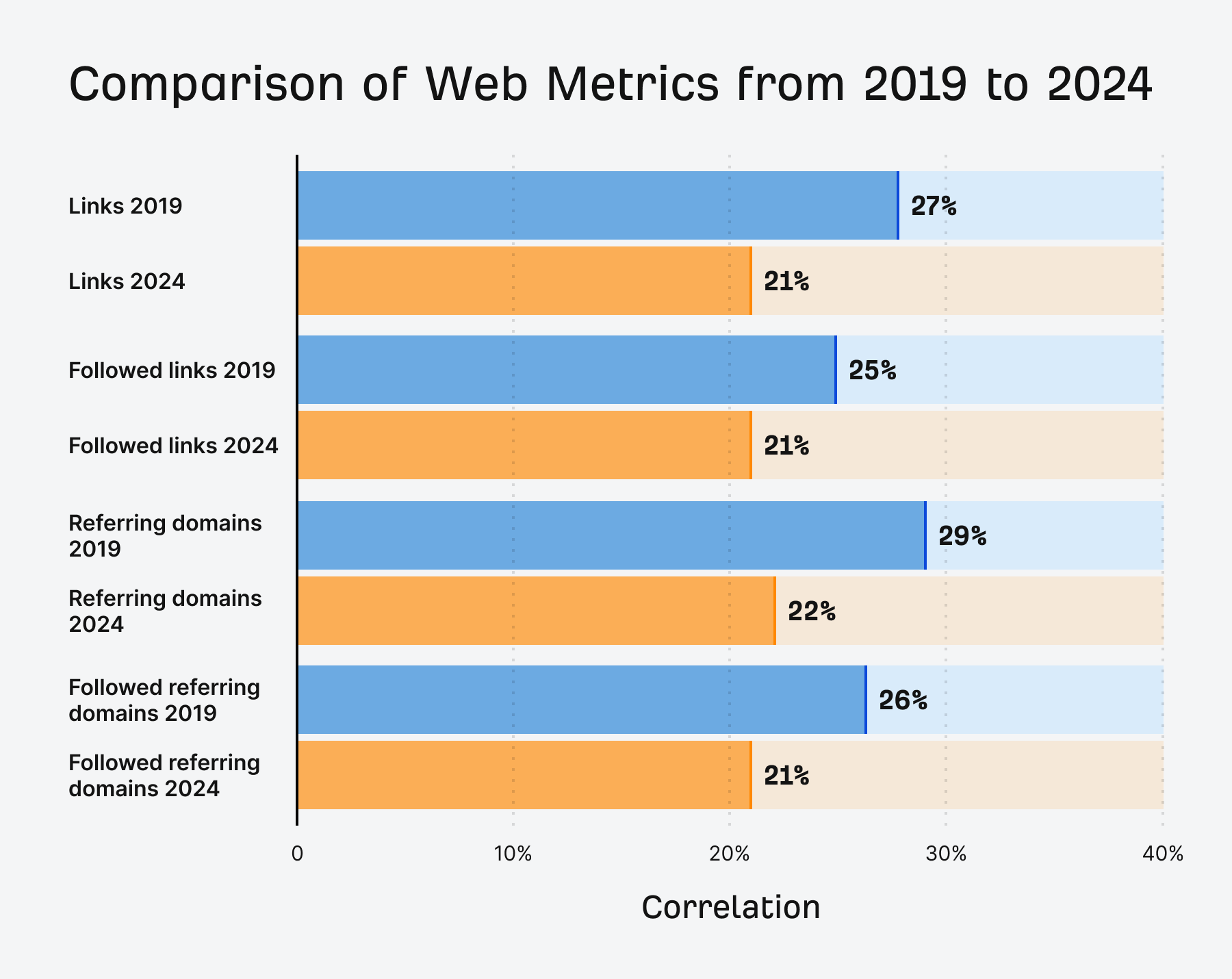
This is in line with Google comments on links becoming less important and how SEOs perceive them. However, one of the reasons I wanted to run this study is to see how this changes in the next couple years. With the rise of AI content, I suspect Google may end up relying on links or other signals more, and may start weighting them higher.
Links and RDs correlated at .33 for local queries, which is a lot higher than what we’ve seen and even higher than what we saw overall years ago. I suspect that because content on sites for local service companies is very similar, links make a good differentiator to see which company is popular.
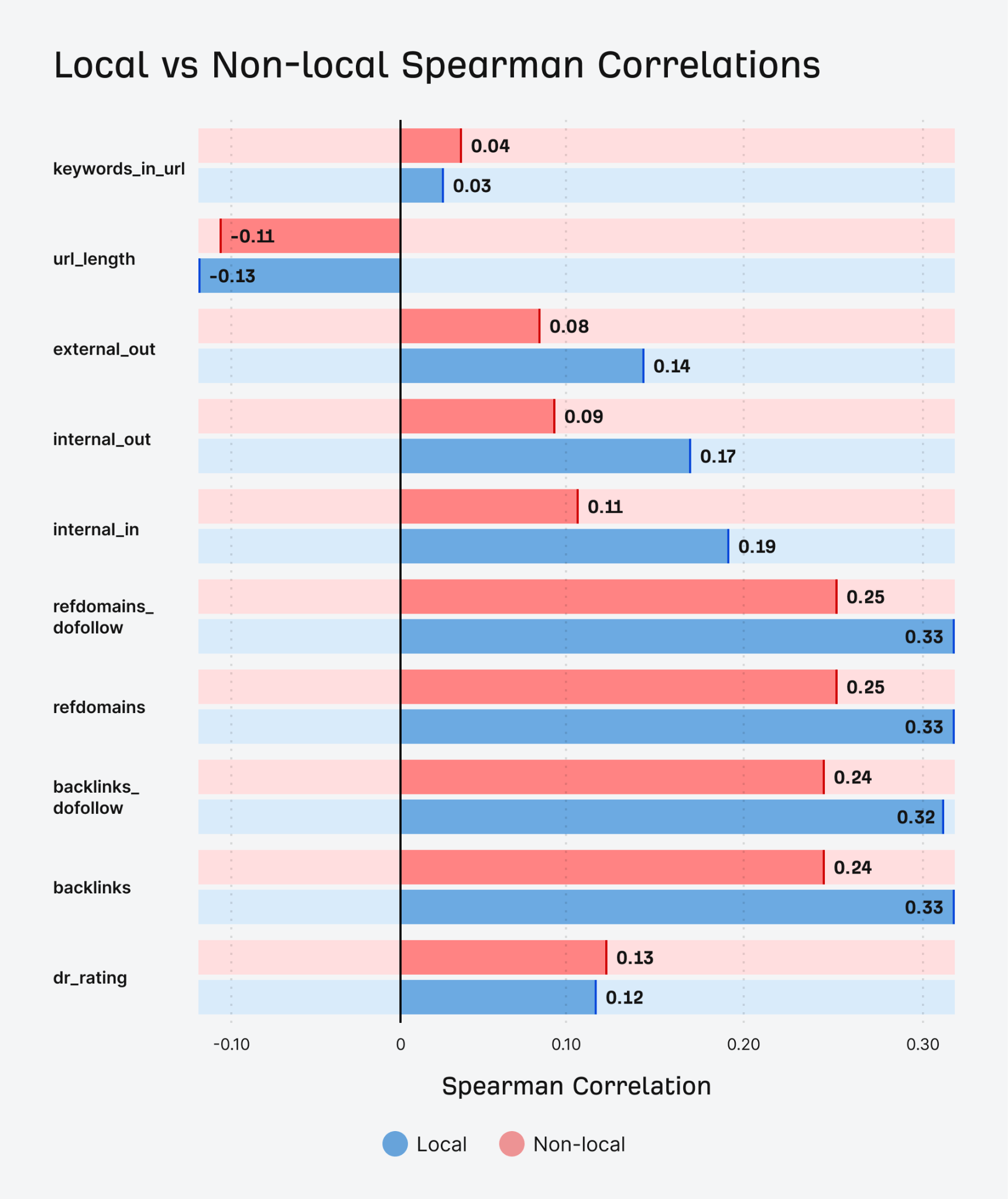
I want to point out that internal links seem to matter a lot more for local queries. I suspect there are fewer external link signals for these queries, so the additional signals from internal links become more important.
If we look at the data by search intent, navigational queries have the highest correlation. These are mostly branded, and as I said, brands have more links.
What’s more interesting is that backlinks for informational queries seem to have a higher correlation for rankings than commercial and transactional queries.
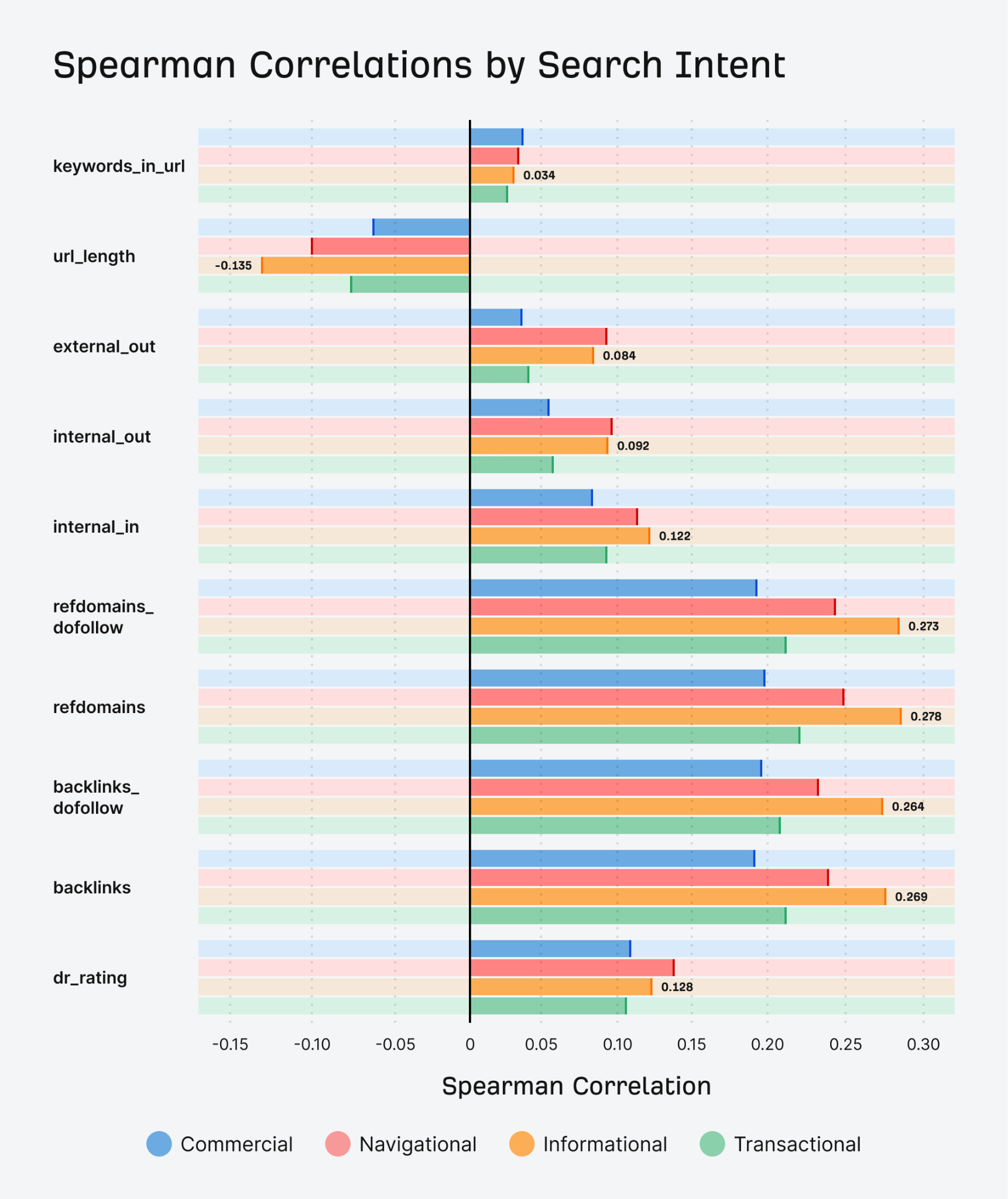
I suspect that because competition levels for these terms are high, links may be considered a good signal by Google. It could also be that better content ends up getting more links over time.
Final thoughts
Links are one part of a bigger ranking puzzle, but you still need to do other things well, like create great content. Where Google has more signals, they may rely less on any one signal. Where they have fewer signals, they may rely more on things like links. In high-competition areas where content may be strong, they also may rely on link signals as more of a differentiator.
The way I view it is that companies, especially local companies, probably should focus on at least foundational links. Larger companies likely already have marketing efforts and content bringing them links, so links may not be as much of a priority. However, when pages for large companies need a push, I’ve seen even internal links give a nice boost.
Similar Posts
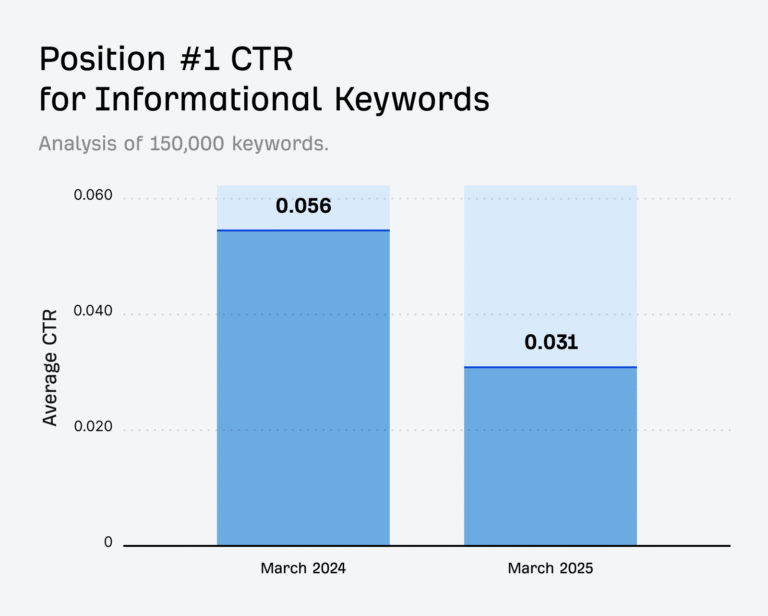
AI’s Impact on SEO: 13 Things That Changed, 4 Things That Stayed The Same
AI assistants like ChatGPT, Gemini, and Perplexity have become the new places people turn to for answers—handling millions of prompts every day. Even Google now uses AI to generate summaries right at the top of search results. This shift happened fast. In 2024, AI Overviews rolled out to millions of searches, ChatGPT climbed into the…

Is .ai a Good Domain? A Quick Overview of one of the Hottest Domain
If you read nothing past this sentence, then here’s the quick summary: .ai is a good domain for people wanting a home for tech and artificial intelligence work. Done. You can go home now. But if you want to know more (or are second-guessing yourself) let us put your mind at ease by showing why…

.org vs .com: What’s the Difference & How to Choose Which Domain Extension Is For You
.com and .org are both well-known examples of domain extensions. But what is .com exactly, and what is .org? And does it matter which one you use? (Spoiler alert: yes.) When you set up a website for a business or a non-profit organisation, you might think the most important part of the address is the…

Google Thinks AI Mode Is Good for Users, but the Content Isn’t Good Enough to Rank in Google
I set up some tests over a month ago to see if Google would rank content generated by Google AI Mode in the organic search results. Spoiler: it did not rank. Google believes AI Mode content is good enough to show to users in what will likely be the default search mode in the future. But…
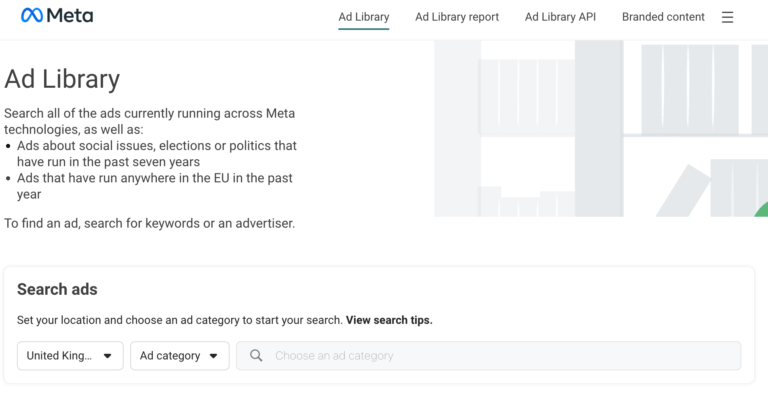
5 Smart Ways to Spy On Your Competitors’ Ads
Most marketers approach competitor analysis with the wrong mindset. They see a successful ad and think, “I should do exactly that!” This is a recipe for mediocrity. Competitors don’t always know what they’re doing. Their campaigns might be underperforming, and blindly following them could land you in the same hole. You also don’t want to…
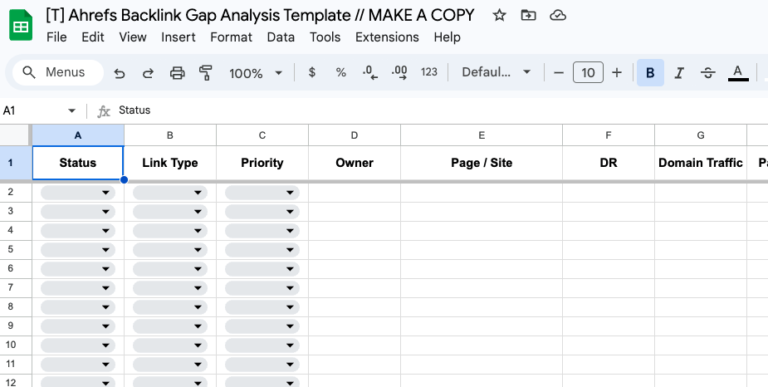
How to Do a Backlink Gap Analysis (With Template)
A backlink gap analysis is the process of finding great links your competitors have that you don’t. It involves evaluating your competitors’ quality of backlinks and deciding if similar links could also improve your site’s SEO. This process helps you: Find quality links quickly Improve your domain’s authority Close gaps against competitors In this guide, you’ll…
